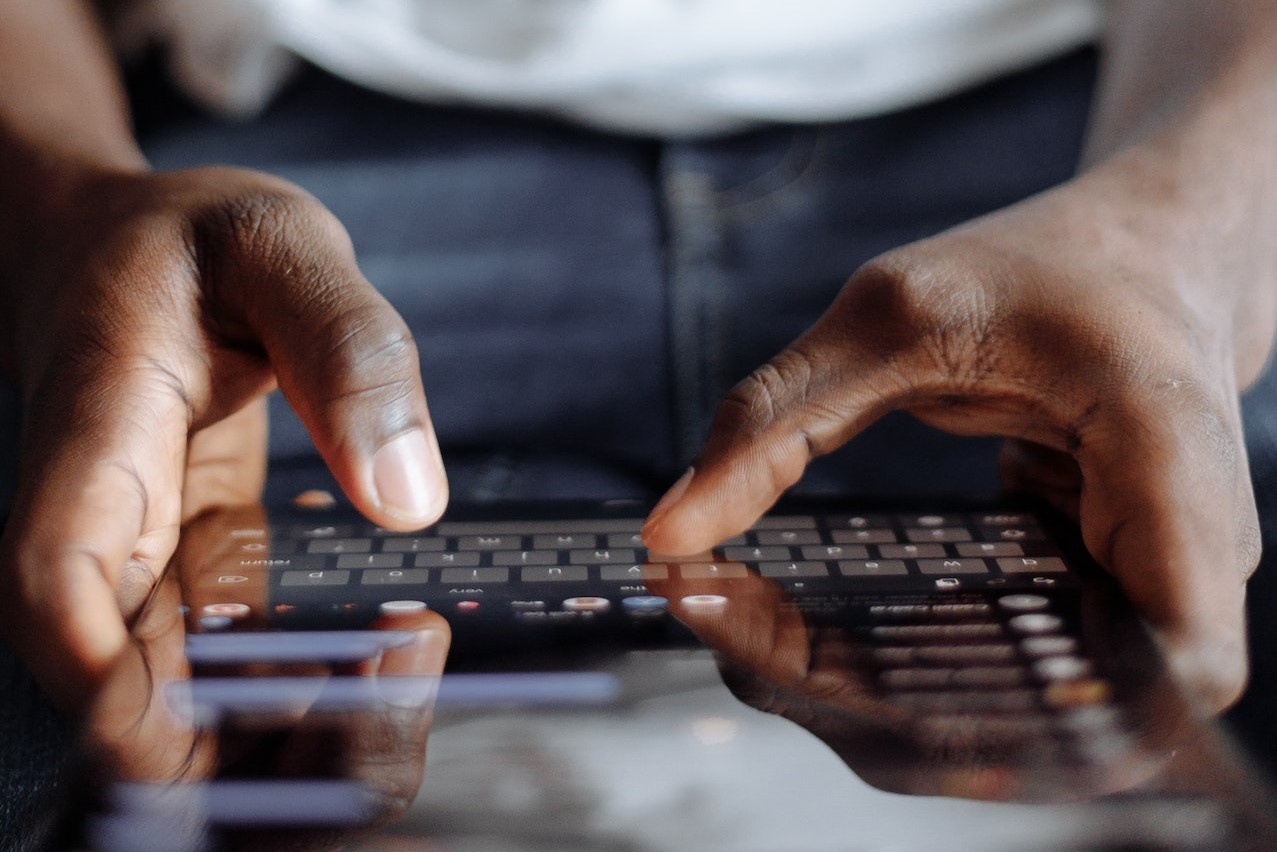6 Ways VR and AR Can Help Individuals with Autism
Dhwani Shah
November 1, 2023
‧
7 min read
Try to imagine a normal day in your life. You get dressed, leave your home, cross the street, take the train or maybe the bus, walk with the crowd to your office building, take the elevator, greet your co-workers and turn on your computer. This might sound like the usual morning routine for many of us, things and activities that we easily, almost mindlessly do, or rather ‘accomplish’, within the first few hours of us waking up. However, for someone with autism, every one of the tasks that I mentioned could feel herculean, extremely taxing, overwhelming and difficult.
Autism spectrum disorder (ASD) is a lifelong neurodevelopmental condition characterized by challenges in behavior and social interaction, sensory sensitivities, difficulty with verbal and nonverbal communication and attention issues. Autism is not an illness; it just means people with ASD behave, interact and learn in ways that are different from other people.
In recent years, virtual reality (VR) and augmented reality (AR) technologies have emerged as powerful tools to support individuals with autism. Autism therapists and researchers started to use VR in the mid-1990s. However, back then, these technologies were expensive and headsets were bulky and uncomfortable, preventing them from becoming feasible options for helping people with autism. Fortunately, with the technologies now becoming cheaper and more accessible, here are some ways VR and AR can help enhance the lives of people with autism, providing new opportunities for learning, socialization, and sensory regulation.
One of the core challenges for individuals with autism is social interaction. Even short, simple conversations can prove to be overwhelming and daunting. VR and AR technologies can create safe and controlled environments to prepare those on the spectrum for social situations or encounters. Virtual environments can simulate social interactions, allowing children to practice and develop social skills, such as turn-taking, initiating conversations, or understanding nonverbal cues. These simulations can be designed to gradually increase in complexity, allowing individuals to gain confidence and improve their interaction skills at their own pace. Research has proved that individuals with autism are able to extend the application of the skill set learnt in virtual worlds to the real world.
One of the vital components in decoding human interaction is understanding, identifying and recognizing emotions and perspectives. AR can overlay visual cues or prompts onto real-life situations to assist individuals with identifying and interpreting facial expressions, body language, and emotions, which can enhance their ability to navigate social interactions. VR experiences can offer first-person perspectives to help individuals with autism understand different points of view and develop empathy skills. VR can also foster collaboration and teamwork among children by providing shared virtual spaces for cooperative activities.
Project VOISS (Virtual Reality Opportunities to Integrate Social Skills) uses VR to simulate social interactions and help people with ASD practice and experience day-to-day encounters and situations in a safe environment.

VR and AR can facilitate life skills training for individuals with autism, promoting independence and functional abilities. VR simulations can guide individuals through activities of daily living, such as cooking, cleaning, or personal hygiene, helping them develop practical skills in a virtual environment. Further, VR can also help resolve problems that autistic people tend to face in the workplace by providing realistic job simulations that allow individuals to practice vocational skills, problem-solving, and workplace interactions, leading to increased employability and independence.
AR applications can offer navigational cues, maps, and directions to assist individuals with autism in navigating public spaces and community settings.
Floreo is an accessible, easy-to-use immersive VR program designed to help autistic kids cultivate real-world life and social skills without being physically present in social situations. Floreo enables kids to learn skills like joint attention, imitation, gestures, and mindfulness, making it easier to navigate everyday scenarios such as the school environment, crossing the street, using public transportation, or visiting grocery stores.

Children with ASD may have difficulty developing language skills and understanding what others say to them. They also face challenges communicating nonverbally - through eye contact, hand gestures and facial expressions. In fact, a failure to develop language is one of the earliest signs of autism.
VR applications can provide virtual speech therapy sessions, offering personalized speech and language exercises, pronunciation practice, and conversational interactions. AR can overlay visual supports, such as visual schedules, picture cues, or text prompts, onto real-world environments, assisting individuals in understanding and following instructions, routines, or tasks.
Apps such as Proloquo2Go and Avaz AAC allow people who are nonverbal to communicate through the use of pictures and aid in language development. They also act as a great support for caregivers, educators and therapists.

Sensory sensitivities are common among those with autism. Bright or flashing lights, loud music, and drastic temperature changes are some examples of sensory overload which can result in distractions, anxiety, distressed behavior and tantrums. AR and VR can create tailored and controlled sensory experiences, allowing individuals to gradually acclimate to different sensory stimuli, such as visual, auditory, or tactile inputs, at a pace that is comfortable for them, helping in desensitization and sensory integration therapy.
A unique VR art experience, Touching Masterpieces, staged by Geometry at the National Gallery of Prague and backed by the Czech Ministry of Culture, brought iconic sculptures - such as Michelangelo’s David, the bust of Nefertiti, and Venus de Milo - to life for the blind by transforming them into virtual objects, using a pair of haptic gloves instead of the usual headset equipment.
Similar applications could be extended to the world of ASD to allow those on the spectrum to enhance their tactile sensations.
AR applications can provide visual or auditory cues for relaxation and self-calming techniques, assisting individuals in managing sensory overload or anxiety in real-time. Relaxing 360-degree videos of animate or inanimate objects or locations can be used to calm students and divert their attention away from the trigger. Just like these precious puppies that can alleviate your stress within minutes!
Augmented Reality (AR) and Virtual Reality (VR) technologies can be valuable tools in assisting individuals with autism who experience attention difficulties. Attention difficulties such as short attention span, impulse control and hyperactivity can impact a person’s school and community life. AR and VR can provide highly interactive and engaging experiences that capture and maintain individuals' attention.
The immersive nature of these technologies - where the user can see, hear and feel the same experiences as in real life - can help individuals with ASD focus on specific tasks, activities, instructions or learning materials, rather than on the noises and distractions around them. By offering visually stimulating and interactive content, AR and VR can increase individuals' engagement and motivation, thereby improving their ability to sustain attention.
Further, AR and VR technologies can be personalized to accommodate individuals' attention needs and give learners control over their learning environment. For example, adjustable settings such as the pace of information delivery, complexity of tasks, or time for completion, and even the volume, lighting, or other factors can be tailored to suit individuals' specific attentional and sensory abilities. Additionally, adaptive algorithms within these technologies can analyze individuals' responses and adjust the difficulty level or content to optimize their engagement and attention.
Moreover, gamification can make life easier for those with attention difficulties by providing positive feedback and reinforcement. Incorporating game-like elements such as progress indicators, rewards and leaderboards, can boost self-confidence and foster a sense of accomplishment and intrinsic motivation.

Research shows that autistic people are at increased risk of mental health problems, especially anxiety and depression. This could be a result of their struggle to fit in or make sense of the world or the stigmas they face. They may also face delays in getting their mental health problems diagnosed since they find it difficult to perceive and communicate their feelings.
AR and VR can be utilized for emotional support and mental health interventions for individuals with autism. VR environments can create calming and soothing experiences to help reduce anxiety or stress. Guided mindfulness or relaxation programs in VR can support emotional regulation and self-care. VR-based mindfulness training has been shown to be effective not only in improving levels of mindfulness and meditation experience, but also in reducing anxiety, depression, improving sleep quality, emotion regulation, and generating mood improvement.
Guided Meditation VR is an app that creates a completely virtual and immersive meditation experience for anxiety management. The app offers over 20 scenic and soothing environments with natural elements, custom audio soundtracks, and different meditative durations - all of which can be customized to tailor-make the ultimate healing and de-stressing experience. Guided Meditation VR can be used on multiple VR platforms.
Therapeutic VR simulations have shown promise in helping individuals with autism overcome specific phobias or anxieties by providing immersive exposure therapy experiences in a controlled and supportive environment. Many individuals with ASD have specific phobias - such as a fear of heights, animals, elevators, classrooms, or balloons - that significantly affect their daily lives. Cognitive behavioral therapy (CBT), the most commonly used therapy for phobias, may not fully benefit individuals with ASD because this technique requires imagination, visualization and abstract thinking, which individuals with ASD struggle with.
To address this, researchers at Newcastle University Medical, working alongside innovative technology firm Third Eye NeuroTech, have developed the Blue Room - an intervention that combines cognitive-behavioral therapy (CBT) delivered with gradual exposure in a fully immersive, controllable virtual reality environment.
Participants enter a “Blue Room”, where they navigate through a personalized 360-degree video projection of a scene, accompanied by audio, that replicates the feared situation. The virtual environment requires no goggles; the scene can be navigated and manipulated working with a therapist using iPad controls. The therapist works with the participant, also using CBT techniques, to help participants manage their anxiety, while gradually moving through a hierarchy of exposing (for instance, seeing a small dog first and later a larger one), allowing the patient to gradually desensitize themselves to the phobia, reduce anxiety and build resilience. The research, which involved a controlled and randomized trial of children as well as adults has shown positive results.
Using VR to create simulated environments for learning and practicing social skills has proven to be successful. However, it is also increasingly being used by people with autism to convey their personal experiences, both to raise awareness of the condition and to capture the cognitive and perceptual differences that characterize it.
One such project is Beholder, designed and created by Matt Clark, who has a 15-year-old son with severe autism, to enable others to better see and comprehend his nonverbal son’s perspective on the world. Rather than focus on the negative aspects of autism, Beholder celebrates some of the fascinating elements of neurodivergent perception.
In 2016, creative firm Don’t Panic, produced an immersive experience for the nonprofit National Autistic Society, portraying how isolated and overwhelmed an autistic child may feel at a shopping mall.
In 2023, the CDC reported that approximately 1 in 36 children in the U.S. is diagnosed with an autism spectrum disorder (ASD). Living with ASD can be extremely challenging, for the caregiver as well. Virtual reality and augmented reality technologies have the potential to revolutionize the support and inclusion of individuals with autism. By harnessing the power of VR and AR, we can create safe and immersive environments for social skill development, sensory regulation, communication and language development, and life skills training. As we continue to explore the possibilities, let us embrace these technologies to empower individuals with autism, unlock their potential, and create a more inclusive society.